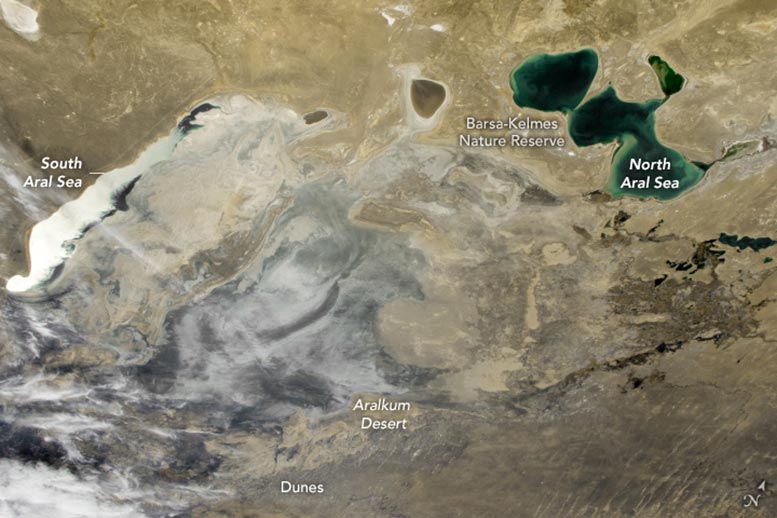
The Aral Sea, once a flourishing lake along the Kazakhstan-Uzbekistan border, has shrunk significantly over the years due to river diversions, leading to the emergence of the new Aralkum Desert. This environmental catastrophe has resulted in frequent dust storms and ecological deterioration, prompting restoration efforts like planting vegetation to stabilize the area.
The astronaut photo of the Aral Sea, taken aboard the International Space Station, showcases the drastic decline of this endorheic lake, fed by the Amu Darya and Syr Darya rivers. The diversion of these rivers for agricultural purposes has caused a rapid decrease in the lake’s surface area over the past six decades.
Formerly the fourth-largest lake globally, the Aral Sea has now diminished to only about 10 percent of its original size. The transformation of the dried lakebed into the Aralkum Desert has led to the formation of a new desert spanning 62,000 square kilometers. Sand dunes, created by winds blowing across the desolate landscape, are evident in the image, as well as sand and dust storms impacting local air quality.
The significance of the Aral Sea, translated as “island” in the local Turkic language, is highlighted by its past as a vast lake with over 1,100 islands. The Barsa-Kelmes Nature Reserve, located on one of these former islands, provides a habitat for numerous plant and animal species. Restoration projects, like the planting of black saxaul shrubs, aim to revive native species and mitigate dust storms by stabilizing the soil.
Efforts to restore the Aral Sea ecosystem and combat aridification are crucial in preserving the region’s biodiversity and combating environmental degradation. The astronaut photograph serves as a striking visual reminder of the impact of human activities on natural landscapes, emphasizing the importance of sustainable environmental practices.


